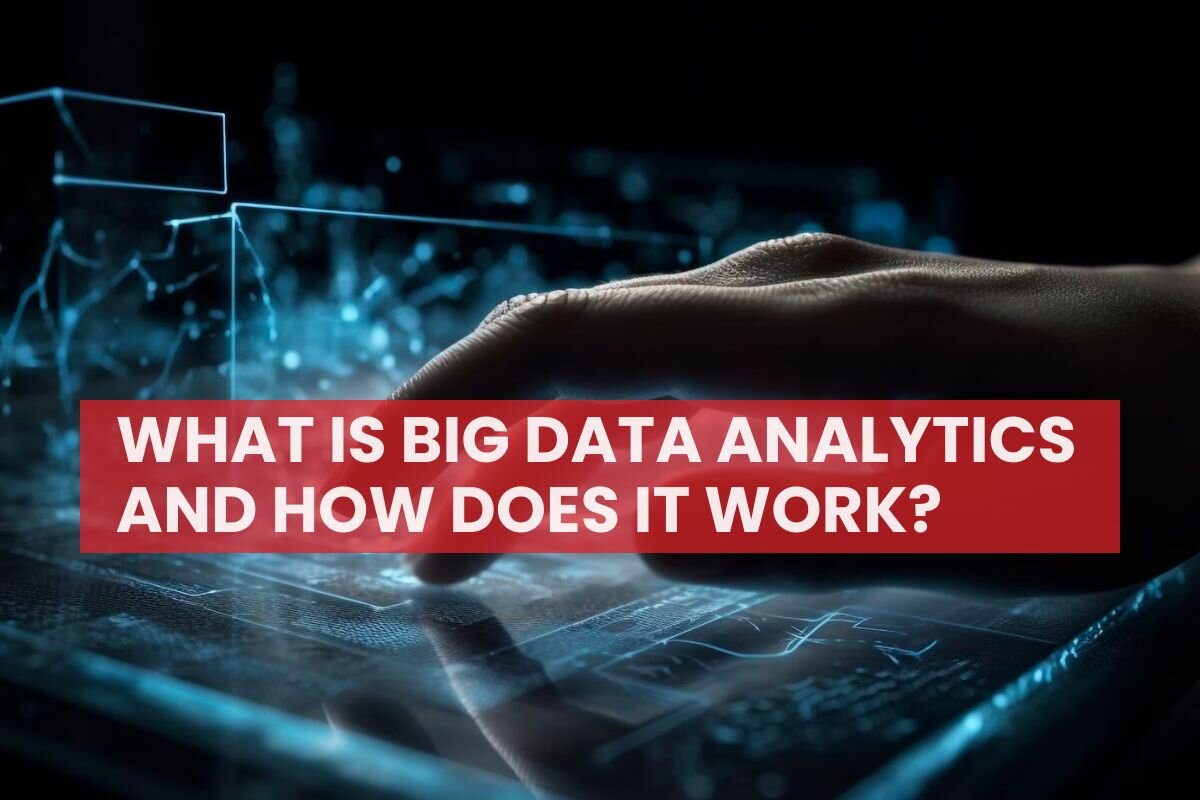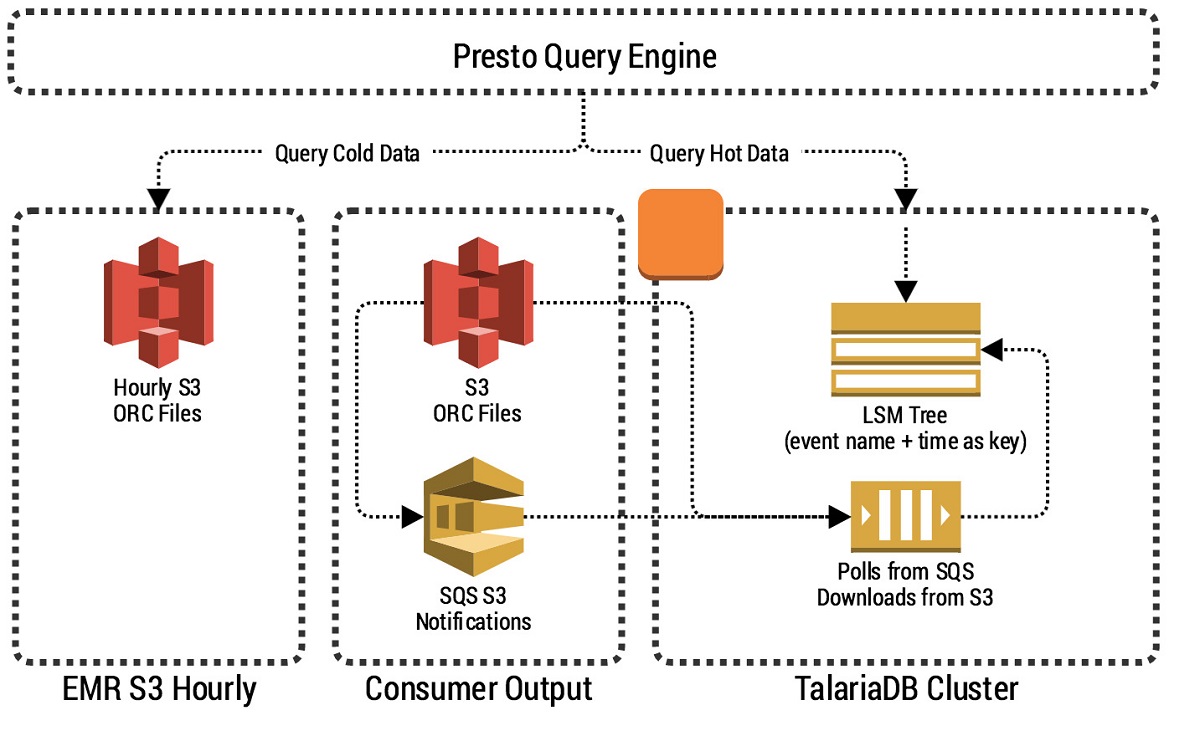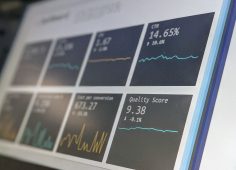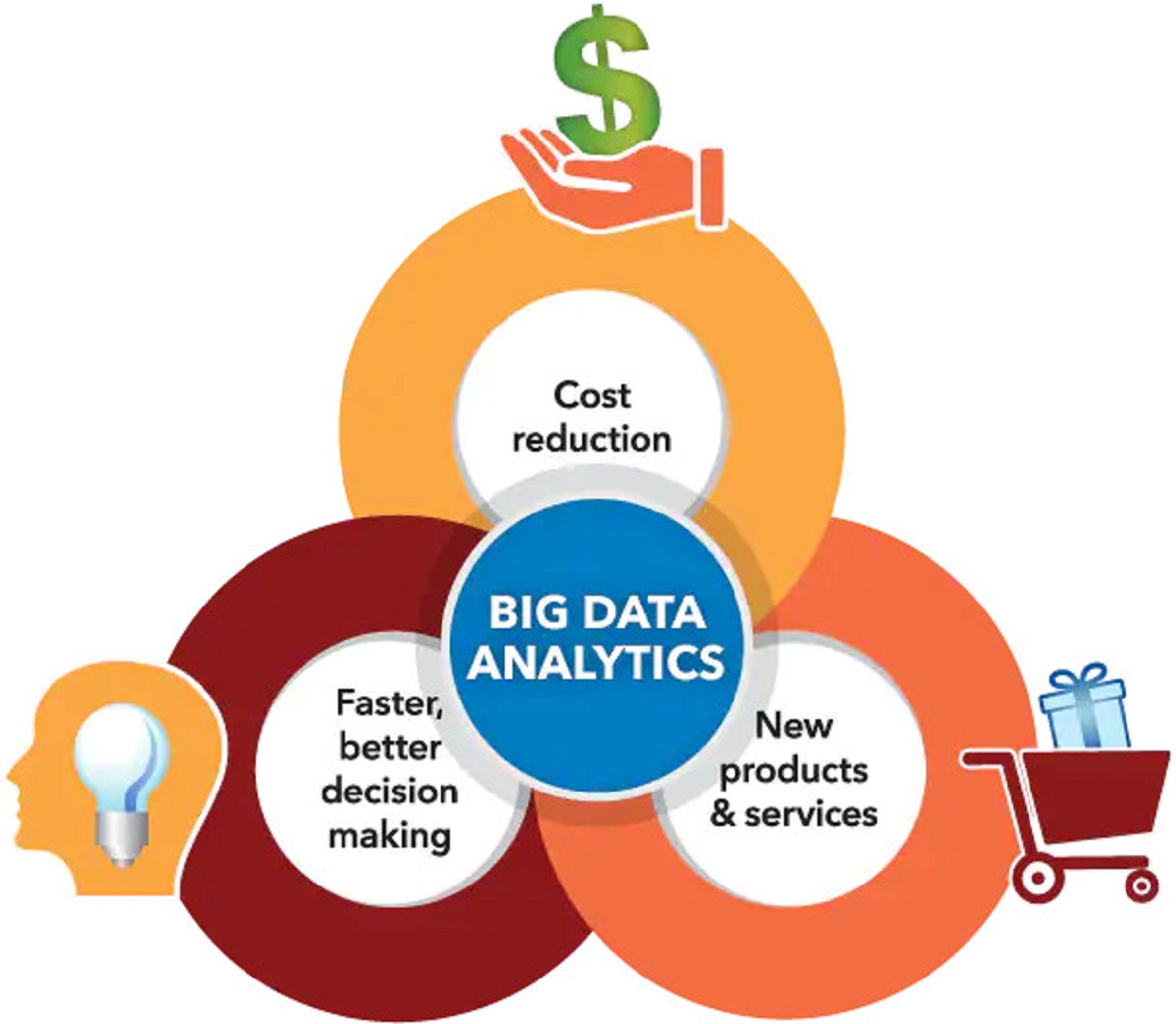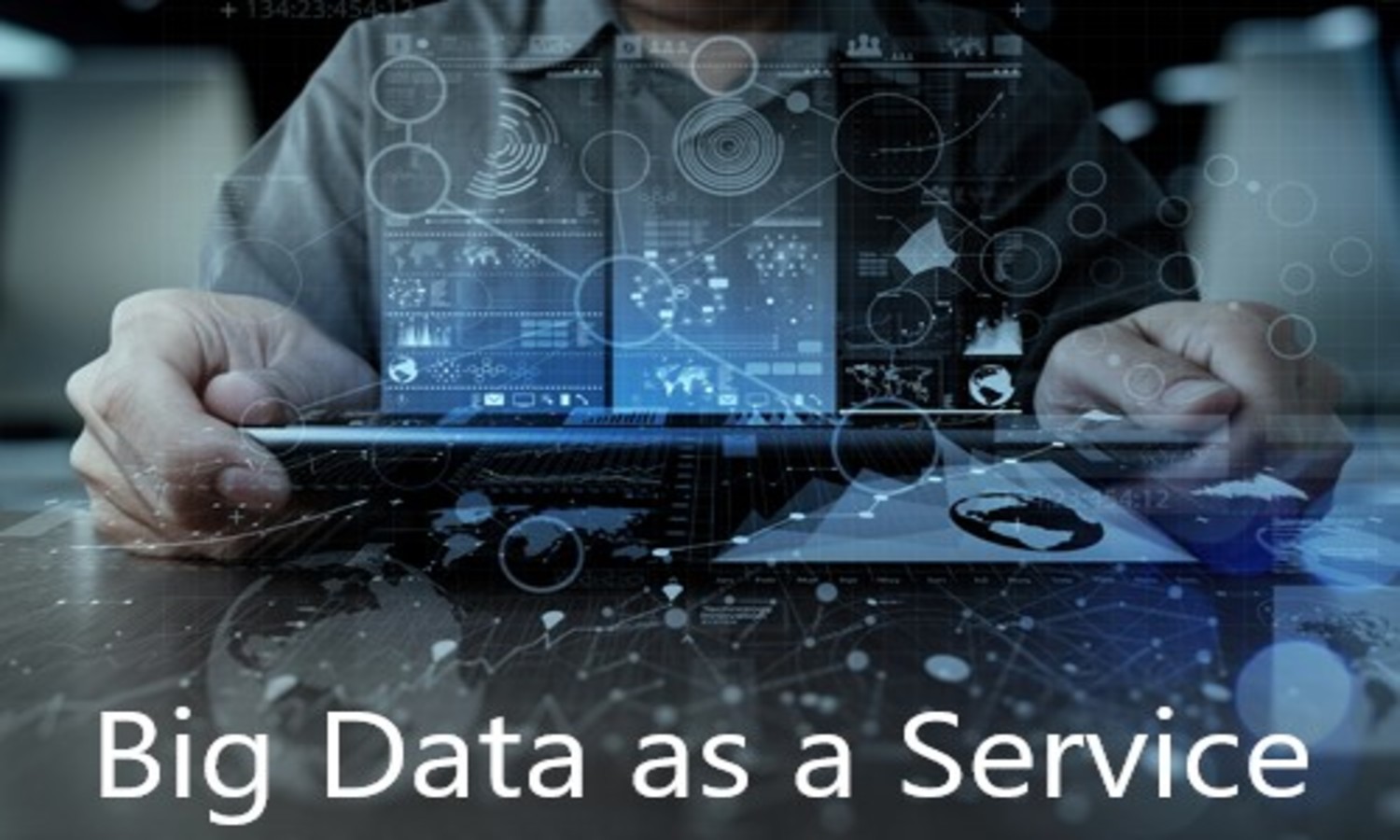Introduction
Welcome to the world of big data analytics! In today’s digital age, gigantic volumes of data are being generated every second. This data holds valuable insights and patterns that can profoundly impact businesses, organizations, and society as a whole. To unlock the potential of this data, we turn to big data analytics. So, what exactly is big data analytics?
Big data analytics refers to the process of examining large and complex data sets to discover hidden patterns, correlations, and trends. It involves using advanced technologies and techniques to gain meaningful insights that can aid decision-making, drive innovation, and optimize business operations.
The sheer volume, velocity, and variety of data generated in our digital world have made traditional data processing and analysis methods insufficient. Big data analytics, on the other hand, provides a more robust and scalable solution for dealing with this avalanche of data. It enables organizations to harness the power of data in real-time, allowing for quick and informed decision-making.
Advancements in data storage, processing technologies, and machine learning algorithms have made big data analytics more accessible and practical than ever before. With the ability to process vast amounts of structured and unstructured data, organizations can gain a deeper understanding of customer preferences, market trends, operational inefficiencies, and much more.
By leveraging big data analytics, businesses can gain a competitive edge in the market. They can identify new revenue opportunities, customize their products and services according to customer needs, and improve overall business efficiency. Moreover, big data analytics has tremendous potential in various sectors such as healthcare, finance, manufacturing, transportation, and even social sciences.
In the following sections, we will delve deeper into the components of big data analytics, the challenges involved, and the applications that make it such a vital field. So, fasten your seatbelts as we take you on an exciting journey through the world of big data analytics!
What is Big Data Analytics?
Big data analytics is a field that involves the discovery, interpretation, and application of patterns, insights, and knowledge from large and complex data sets. It goes beyond traditional data analysis methods by leveraging advanced technologies, statistical algorithms, and machine learning to extract valuable information from diverse sources of data.
The term “big data” refers to data sets that are too large, fast, or complex for traditional data processing and analysis tools to handle. These data sets typically include structured data (such as transaction records and customer data) and unstructured data (such as social media posts, emails, and sensor data). Big data analytics enables organizations to make sense of this vast amount of information and use it to drive informed decision-making and strategic planning.
The process of big data analytics involves several stages. First, data needs to be collected from various sources, such as databases, social media platforms, and IoT devices. Once collected, the data is stored in a centralized repository, often using distributed file systems or cloud storage solutions. Next, the data goes through processing, where it is cleaned, transformed, and prepared for analysis.
After the data is processed, the analysis phase begins. This stage involves applying various statistical techniques, data mining algorithms, and machine learning models to identify patterns, correlations, and trends within the data. The goal is to extract meaningful insights and actionable information that can be used for decision-making. Finally, the results of the analysis are visualized in an intuitive and interactive manner, using charts, graphs, and dashboards, to facilitate easy understanding and interpretation.
The application of big data analytics is vast and spans across industries and sectors. In business, it can help organizations optimize operational processes, improve customer experience, and identify new market opportunities. In healthcare, big data analytics can aid in disease prevention, personalized medicine, and predicting outbreaks. In finance, it can assist in fraud detection, risk assessment, and portfolio optimization.
Ultimately, big data analytics plays a crucial role in unlocking the value hidden within massive data sets. By leveraging advanced technologies and techniques, organizations can gain deep insights, make data-driven decisions, and stay ahead in today’s fast-paced, data-centric world.
Advantages of Big Data Analytics
Big data analytics offers numerous advantages that empower organizations to gain valuable insights, drive innovation, and make informed decisions. Let’s explore some of the key benefits of leveraging big data analytics.
1. Improved Decision-Making: Big data analytics provides organizations with actionable intelligence based on real-time data. By analyzing large volumes of data from various sources, businesses can make data-driven decisions that are more accurate and informed. This leads to better strategic planning, improved operational efficiency, and a competitive edge in the market.
2. Enhanced Customer Experience: Big data analytics enables organizations to understand their customers better. By analyzing customer data and behavior patterns, businesses can personalize their products, services, and marketing campaigns to meet specific customer needs and preferences. This leads to enhanced customer satisfaction and loyalty.
3. Identification of Market Trends: Big data analytics allows organizations to identify and capitalize on emerging market trends. By monitoring and analyzing data from various sources like social media, customer feedback, and industry reports, businesses can gain insights into changing consumer preferences, market demand, and competitive landscapes. This knowledge can help drive product development, marketing strategies, and overall business growth.
4. Operational Efficiency: Big data analytics helps businesses identify inefficiencies and bottlenecks in their operations. By analyzing large datasets related to production, supply chains, and resource allocation, organizations can optimize processes, reduce costs, and improve overall efficiency. This leads to increased productivity and profitability.
5. Better Risk Management: Big data analytics plays a crucial role in risk assessment and management. By analyzing historical and real-time data, organizations can identify potential risks, fraud patterns, and anomalies in their operations. This enables proactive risk mitigation and helps businesses safeguard their assets, reputation, and bottom line.
6. Innovation and New Opportunities: Big data analytics uncovers insights that can drive innovation and open up new opportunities. By analyzing customer feedback, market trends, and competitor data, organizations can identify gaps in the market and develop new products or services to meet emerging needs. This fosters innovation and keeps businesses ahead of the curve.
7. Data-Driven Marketing: Big data analytics enables organizations to personalize their marketing efforts based on customer behavior, preferences, and demographics. By analyzing customer data and segmentation, businesses can create targeted marketing campaigns, resulting in higher conversion rates and ROI.
Big data analytics is a powerful tool that empowers organizations to leverage their data assets and gain a competitive advantage. By harnessing the power of big data, businesses can improve decision-making, enhance customer experiences, drive innovation, and optimize operations to achieve sustainable growth in today’s data-driven world.
Components of Big Data Analytics
Big data analytics consists of several key components that work together to transform raw data into valuable insights. Let’s take a closer look at these components:
- Data Collection: The first step in big data analytics is collecting the data from various sources. This can include structured data from databases, unstructured data from social media platforms, and semi-structured data from IoT devices. Data can be collected in real-time or through batch processing methods to ensure comprehensive coverage.
- Data Storage: Once collected, the data needs to be stored in a way that facilitates efficient analysis. Traditional relational databases may not be capable of handling the massive volumes and variety of big data. As a result, organizations turn to distributed file systems like Apache Hadoop or cloud-based storage solutions to store and manage the data.
- Data Processing: In this stage, the collected data is prepared for analysis. This involves cleaning and preprocessing the data to remove inconsistencies, errors, and missing values. Data cleansing techniques are employed to ensure the accuracy and quality of the data, making it ready for further analysis.
- Data Analysis: This component forms the heart of big data analytics. Data analysis encompasses the application of statistical algorithms, data mining techniques, and machine learning models to identify patterns, correlations, and trends within the data. Exploratory data analysis, predictive modeling, and clustering algorithms are commonly used in this phase to derive meaningful insights.
- Data Visualization: Once the data has been analyzed, the findings need to be presented in a clear and concise manner. Data visualization techniques are employed to create graphs, charts, and visual representations that make it easy for decision-makers to understand and interpret the insights. Visualization tools like Tableau, QlikView, and Power BI are commonly used in this stage.
These components work in harmony to make big data analytics a powerful tool for extracting valuable insights from large and complex data sets. By collecting, storing, processing, analyzing, and visualizing data, organizations can gain a deeper understanding of their operations, customers, and market dynamics.
It is important to note that the implementation of these components can vary depending on the specific needs and resources of an organization. Some organizations may have dedicated data engineering teams to handle data collection and storage, while others may rely on cloud-based infrastructure to store and process data. Regardless of the specific setup, the components of big data analytics work together to deliver actionable intelligence that drives decision-making and fuels innovation.
Data Collection
Data collection is a critical component of big data analytics that involves gathering relevant data from various sources. With the exponential growth of data in today’s digital world, organizations must collect and aggregate data in a comprehensive and systematic manner to ensure accurate and reliable analysis. Let’s explore the key aspects of the data collection process:
1. Identifying Data Sources: The first step in data collection is identifying the sources from which the data will be obtained. These sources can include internal databases, third-party APIs, social media platforms, customer interactions, IoT devices, and more. It is essential to determine which data sources are relevant to the analysis and align with the organization’s goals and objectives.
2. Data Extraction: Once the data sources are identified, the data needs to be extracted. This may involve using data extraction tools or programming scripts to retrieve data from APIs, databases, or web scraping. The extraction process should be designed to capture the required data accurately and ensure data integrity.
3. Data Integration: In many cases, organizations deal with data from multiple sources, each with its own format and structure. Data integration involves combining data from different sources into a unified and consistent format. This step may require data mapping, data transformation, and data cleaning to ensure the compatibility and quality of the collected data.
4. Real-time Data Collection: In an era of real-time analytics, organizations often require timely insights to make quick decisions. Real-time data collection involves capturing and processing data as it is generated or updated. This can be achieved through technologies like event stream processing or by leveraging sensors, IoT devices, and real-time APIs.
5. Data Privacy and Security: Data collection must adhere to privacy and security regulations to protect sensitive information. Organizations need to implement robust data protection measures like encryption, access controls, and anonymization techniques. Compliance with data protection laws, such as the General Data Protection Regulation (GDPR) or Health Insurance Portability and Accountability Act (HIPAA), is of paramount importance.
6. Scalability and Data Volume: With big data analytics, organizations deal with vast amounts of data. The data collection process should be scalable to handle the growing data volume over time. This often requires distributed data collection approaches and technologies like data streaming, distributed file systems, or cloud-based storage solutions.
Data collection sets the foundation for successful data analysis. It is crucial to ensure the accuracy, relevancy, and quality of the collected data to achieve meaningful insights. Organizations must adopt robust data collection strategies and technologies to effectively harness the power of big data analytics.
Data Storage
Data storage is a crucial component of big data analytics that involves the efficient and reliable storage of large volumes of data. As organizations collect and process vast amounts of data, they require scalable and flexible storage solutions to handle the diverse types and increasing sizes of data sets. Let’s explore the key aspects of data storage in the context of big data analytics:
1. Storage Infrastructure: Organizations need to determine the appropriate infrastructure for storing their data. Traditional relational databases often have limitations in terms of scalability and performance for big data. Hence, distributed file systems like Apache Hadoop Distributed File System (HDFS) or cloud-based storage solutions like Amazon S3, Google Cloud Storage, or Azure Blob Storage are commonly used. These distributed storage systems offer high availability, fault tolerance, and the ability to store and process large amounts of data.
2. Data Replication: Data replication is essential to ensure data durability and availability. By replicating data across multiple physical or logical nodes, organizations can ensure that data is accessible even in the event of hardware failures or system outages. Additionally, data replication improves data locality and minimizes data transfer latency, which is important for distributed processing and analytics.
3. Data Partitioning: Data partitioning involves dividing large data sets into smaller, more manageable parts. Partitioning helps distribute data across multiple storage nodes, allowing for parallel processing and improved performance. It enables efficient data retrieval and reduces the impact of data skewness, ensuring balanced resource utilization within the storage infrastructure.
4. Data Compression: Big data often consumes a substantial amount of storage space. Data compression techniques help reduce the size of data sets, minimizing storage costs while maintaining data integrity. Compressed data also improves data transfer speeds and reduces I/O latency during analysis and processing.
5. Data Security and Access Control: As data storage plays a critical role in protecting sensitive information, security measures must be in place to ensure data privacy and integrity. Access controls and encryption techniques are commonly employed to restrict access to authorized personnel and protect data from unauthorized disclosure or tampering.
6. Data Backup and Recovery: It is essential to have robust backup and recovery mechanisms in place to safeguard against data loss or corruption. Organizations often employ backup strategies that include regular data backups, data redundancy, and disaster recovery plans. These measures help ensure data availability and minimize disruption in case of potential data loss events.
7. Integration with Data Processing Technologies: Seamless integration between the data storage system and data processing technologies, such as distributed computing frameworks like Apache Spark or Apache Flink, is critical. This integration enables efficient data processing and analysis by leveraging the distributed data across the storage infrastructure.
Efficient and scalable data storage is a fundamental prerequisite for successful big data analytics. By adopting appropriate storage solutions and implementing robust data management strategies, organizations can unlock the full potential of their data and drive insightful decision-making.
Data Processing
Data processing is a crucial component of big data analytics, involving the transformation and manipulation of data to extract meaningful insights and patterns. As organizations deal with large volumes of diverse and complex data, they require efficient and scalable data processing techniques and technologies. Let’s explore the key aspects of data processing in the context of big data analytics:
1. Data Cleaning and Preprocessing: Before analysis can take place, the collected data needs to be cleaned and preprocessed. This involves removing duplicate entries, handling missing values, and addressing inconsistencies in the data. Data preprocessing techniques like filtering, normalization, and data imputation ensure that the data is accurate and ready for further analysis.
2. Data Transformation: Data transformation involves converting the collected data into a format that is compatible with the analysis techniques being used. This may include converting data into numerical or categorical representations, aggregating data at different levels of granularity, or deriving new variables or features from the existing data.
3. Data Integration: In some cases, data from multiple sources needs to be combined and integrated to create a unified dataset for analysis. Data integration involves resolving inconsistencies in data formats, merging datasets with different structures, and aligning data based on common attributes or keys. This enables a comprehensive and holistic view of the data for analysis.
4. Data Sampling: Processing huge volumes of data can be time-consuming and computationally expensive. To mitigate this, organizations often employ data sampling techniques to work with a representative subset of the data for analysis. Various sampling techniques, such as random sampling, stratified sampling, or cluster sampling, are used to create smaller, manageable datasets that can still provide meaningful insights.
5. Parallel Processing: Big data processing often necessitates the use of distributed computing and parallel processing techniques. Distributed processing frameworks like Apache Hadoop or Apache Spark allow for the execution of data processing tasks across multiple nodes simultaneously. This parallelization improves processing speed and scalability, enabling efficient analysis of large datasets.
6. Statistical Analysis and Machine Learning: Once the data is processed and prepared, statistical analysis techniques and machine learning algorithms are applied to uncover patterns, correlations, and trends within the data. These analysis techniques include descriptive statistics, regression analysis, clustering, classification, and predictive modeling. By leveraging these techniques, organizations can extract valuable insights and make data-driven decisions.
7. Real-Time and Stream Processing: In certain scenarios, organizations require processing and analysis in real-time or near real-time. Real-time and stream processing techniques enable the analysis of continuous, high-velocity data streams, such as stock market data, social media feeds, or sensor data. Technologies like Apache Kafka, Apache Flink, or Spark Streaming are utilized to process and analyze data streams in real-time.
Data processing is a vital step in the big data analytics workflow. By cleaning, transforming, integrating, and analyzing the data, organizations can derive valuable insights and drive meaningful decision-making. Efficient and scalable data processing techniques are essential for effectively harnessing the potential of big data and gaining a competitive edge in today’s data-driven landscape.
Data Analysis
Data analysis is a fundamental component of big data analytics that involves the exploration and interpretation of data to uncover patterns, correlations, and insights. By applying statistical techniques, data mining algorithms, and machine learning models, organizations can gain valuable insights that drive decision-making and strategic planning. Let’s delve into the key aspects of data analysis in the context of big data analytics:
1. Exploratory Data Analysis (EDA): Exploratory Data Analysis is the initial phase of data analysis that involves summarizing, visualizing, and understanding the characteristics of the data. It aims to gain insights into the underlying structure and relationships within the data. Techniques such as data visualization, summary statistics, and correlation analysis are commonly used in EDA to identify interesting patterns and trends.
2. Descriptive Statistics: Descriptive statistics provide a summary of the data’s central tendency, variability, and distribution. Measures such as mean, median, standard deviation, and percentiles help describe the data and provide an initial understanding of its properties. These statistics serve as a foundation for further analysis and interpretation.
3. Predictive Modeling: Predictive modeling involves using historical data to develop models that can make predictions or forecasts about future events or outcomes. Machine learning algorithms like regression analysis, decision trees, random forests, or neural networks are commonly employed to build predictive models. These models are trained on the available data to make accurate predictions on new, unseen data.
4. Clustering and Segmentation: Clustering and segmentation techniques are used to classify similar data points into distinct groups or segments based on their characteristics. These techniques help uncover hidden patterns, segment customers based on their behavior or preferences, and identify distinct subgroups within the data. This enables targeted marketing efforts and personalized recommendations.
5. Pattern Recognition and Anomaly Detection: Data analysis involves identifying meaningful patterns and anomalies within the data. Pattern recognition techniques, such as association rule mining or sequence analysis, help identify relationships and dependencies among variables. Anomaly detection techniques, on the other hand, aim to identify rare or unusual observations or events that deviate significantly from the norm.
6. Sentiment Analysis and Text Mining: With the proliferation of textual data, sentiment analysis and text mining techniques are used to extract insights from unstructured data sources such as social media posts, customer reviews, or support tickets. Natural Language Processing (NLP) algorithms are used to analyze sentiments, extract relevant topics, and understand customer feedback at scale.
7. Visualization and Reporting: Data analysis results are often visualized through various charts, graphs, and dashboards to facilitate easy understanding and interpretation. Visualization tools like Tableau, Power BI, or matplotlib in Python enable the creation of compelling visual representations of the analyzed data. These visualizations aid decision-makers in grasping the insights quickly and making data-driven decisions.
Data analysis is a critical step in deriving actionable insights from big data. It empowers organizations to make informed decisions, uncover hidden patterns, and extract valuable knowledge from their data. By leveraging statistical techniques, machine learning algorithms, and visualization tools, organizations can transform raw data into meaningful insights that drive innovation and deliver a competitive advantage.
Data Visualization
Data visualization is a crucial component of big data analytics that involves presenting data in a visual and intuitive format. Visualizations help to uncover patterns, trends, and insights in a way that is easily understandable and actionable. Let’s explore the key aspects of data visualization in the context of big data analytics:
1. Visual Representation: Data visualization transforms complex data sets into visual representations such as charts, graphs, maps, or interactive dashboards. These visual representations provide a concise and informative overview of the data, making it easier to identify patterns, relationships, and outliers.
2. Facilitating Insightful Analysis: Visualizing data allows for easier identification of trends, correlations, or anomalies within the dataset. By representing data visually, analysts can quickly recognize patterns and gain insights that might not be apparent in raw data alone. This aids in making data-driven decisions and driving meaningful actions.
3. Types of Visualizations: There are various types of visualizations that can be utilized depending on the nature of the data and the objective of the analysis. Common types include bar charts, line graphs, scatter plots, heat maps, pie charts, and treemaps. Each type of visualization has its strengths in highlighting different aspects of the data.
4. Interactive Dashboards: Interactive dashboards allow users to explore and interact with the data visually. Users can apply filters, drill down into specific categories, or change visualization types on-the-fly. Dashboards provide a dynamic and interactive experience, enabling users to gain insights and answer ad-hoc questions by exploring different angles of the data.
5. Storytelling with Data: Data visualizations can be used to tell a compelling story by presenting data in a narrative format. By arranging visualizations in a logical sequence, analysts can guide viewers through the data, highlighting key findings and supporting them with relevant context. Storytelling with data helps to engage stakeholders and communicate insights effectively.
6. Design Principles and Best Practices: Effective data visualizations adhere to design principles and best practices to ensure clarity and ease of interpretation. Key considerations include selecting appropriate visual encodings, using clear labels and titles, choosing appropriate color schemes, and maintaining consistency in the design. Good design principles make visualizations more accessible and impactful.
7. Data Visualization Tools: A wide range of data visualization tools and libraries are available to facilitate the creation of compelling visualizations. Popular tools include Tableau, Power BI, D3.js, matplotlib, and ggplot. These tools provide functionalities for creating customized visualizations, handling large datasets, and embedding visualizations into reports or web applications.
Data visualization plays a crucial role in conveying the insights and patterns hidden within big data. By translating data into visual representations, organizations can effectively communicate complex information, support decision-making, and drive understanding across various stakeholders. As big data continues to grow, data visualization will remain an invaluable tool for unlocking the true value of data.
Applications of Big Data Analytics
Big data analytics has widespread applications across various industries and sectors, revolutionizing the way organizations operate and make decisions. Let’s explore some of the key applications of big data analytics:
1. Healthcare: Big data analytics has the potential to revolutionize healthcare by improving patient outcomes, optimizing treatments, and transforming disease management. By integrating and analyzing electronic health records, medical images, genomic data, and patient-generated health data, healthcare providers can personalize treatments, predict disease risks, and identify patterns for better diagnosis and treatment planning. Big data analytics can also aid in public health initiatives by monitoring outbreaks, tracking trends, and identifying factors influencing population health.
2. Finance: The finance industry heavily relies on big data analytics to enhance risk management, detect fraud, and optimize investment strategies. By analyzing vast amounts of transactional and market data, financial institutions can model complex risk scenarios, identify suspicious transactions, and improve portfolio management. Additionally, big data analytics facilitates the development of personalized financial services, such as customized investment advice or tailored insurance plans, based on individual customer profiles and preferences.
3. Retail and E-commerce: Big data analytics is transforming the retail and e-commerce sector by enabling predictive analytics, personalized marketing, and demand forecasting. By analyzing customer behavior, preferences, and purchase history, retailers can create targeted marketing campaigns, recommend personalized products, and optimize pricing strategies. Big data analytics also helps retailers optimize their supply chain by predicting demand, improving inventory management, and identifying potential bottlenecks in the supply chain process.
4. Manufacturing: In the manufacturing sector, big data analytics plays a significant role in improving operational efficiency, optimizing maintenance schedules, and enhancing product quality. By analyzing data from sensors, production lines, and equipment, manufacturers can identify inefficiencies, predict machine failures, and optimize production schedules. Big data analytics also enables the implementation of predictive maintenance strategies, reducing downtime and maximizing asset utilization.
5. Logistics and Transportation: Big data analytics is transforming the logistics and transportation industry by optimizing route planning, improving fuel efficiency, and enhancing customer service. By analyzing real-time data from GPS systems, weather forecasts, traffic conditions, and customer preferences, logistics companies can optimize delivery routes, reduce costs, and provide accurate delivery estimates. Furthermore, big data analytics enables the identification of patterns and trends to predict demand, optimize supply chain operations, and streamline logistics processes.
6. Social Sciences and Government: Big data analytics has vast implications in the social sciences and governance sectors. By analyzing social media data, public sentiment, and demographic information, governments can make data-driven policy decisions, enhance urban planning, and improve public services. Big data analytics also aids in understanding human behavior, social trends, and public sentiment, which enables researchers to gain valuable insights in areas such as sociology, psychology, and political science.
7. Energy and Utilities: Big data analytics is revolutionizing the energy sector by enabling predictive maintenance of power infrastructure, optimizing energy usage, and facilitating efficient grid management. By analyzing data from smart meters, sensors, and weather forecasts, energy companies can predict equipment failures, reduce downtime, and optimize power distribution. Big data analytics also enables the integration of renewable energy sources and the development of smart grids for efficient energy management.
These are just a few examples of how big data analytics is transforming industries and sectors. The applications are vast and continually evolving as organizations discover new ways to leverage the power of big data. With its ability to unlock hidden patterns, drive informed decision-making, and improve operational efficiencies, big data analytics is becoming an indispensable tool in the era of data-driven insights.
Challenges in Big Data Analytics
While big data analytics offers immense potential, it also presents significant challenges that organizations must navigate to effectively harness its power. Let’s explore some of the key challenges in big data analytics:
1. Data Quality and Integration: Ensuring the quality and reliability of data is one of the primary challenges in big data analytics. The data may come from various sources, each with its own format, structure, and quality. Integrating and cleaning data to create a unified and accurate dataset for analysis can be complex and time-consuming. Issues like missing data, inconsistent formats, or errors in data collection can impact the accuracy of insights derived from the analysis.
2. Scalability and Performance: Managing and processing massive volumes of data at scale is one of the fundamental challenges in big data analytics. Traditional data processing and storage systems may not be capable of handling the ever-increasing size and velocity of big data. Organizations need to adopt scalable and distributed computing technologies and techniques to effectively ingest, process, and analyze large datasets within acceptable timeframes.
3. Data Privacy and Security: Big data analytics involves handling sensitive and personal information, which raises concerns about data privacy and security. Organizations must ensure compliance with relevant data protection regulations and implement robust security measures to protect data from unauthorized access, breaches, or misuse. Balancing data access for analysis purposes while safeguarding individual privacy rights is a significant challenge in the era of big data analytics.
4. Data Governance and Ethical Considerations: With the abundance of data, establishing proper data governance practices becomes essential. Data governance includes defining data ownership, ensuring data quality, and establishing data management policies and procedures. Additionally, ethical considerations arise around the collection, usage, and potential biases in the data being analyzed. Organizations must address ethical concerns to ensure responsible and transparent use of big data analytics.
5. Analytical Skills and Expertise: Big data analytics requires specialized skills and expertise to extract meaningful insights from complex datasets. Data scientists and analysts need a deep understanding of statistics, machine learning, and data processing techniques. Acquiring and retaining such skilled professionals can be challenging due to the increasing demand for analytical talent. Organizations must invest in training and cultivating data analytical skills to effectively leverage big data analytics.
6. Cost of Infrastructure and Technology: Implementing and maintaining the infrastructure and technology required for big data analytics can be costly. Distributed storage systems, processing frameworks, and visualization tools require significant investment. Additionally, the cost of acquiring and managing the necessary hardware, software, and cloud services can pose financial challenges for organizations, particularly for smaller businesses with limited resources.
7. Ethical Use and Bias Mitigation: The application of big data analytics raises concerns about algorithmic bias and unfair decision-making. Biases embedded in the data or algorithms can lead to unjust discrimination, reinforcing existing societal biases. Organizations must be cognizant of these biases and implement measures to mitigate them, ensuring that data analytics is fair, inclusive, and ethical.
Addressing these challenges is vital for organizations to harness the full potential of big data analytics. By investing in data quality, scalability, security, skilled professionals, ethical frameworks, and appropriate technologies, organizations can overcome these challenges and unlock the true value of big data analytics.
Conclusion
Big data analytics has emerged as a powerful tool to unlock insights, drive innovation, and make data-driven decisions in today’s digital age. By harnessing the power of large and complex datasets, organizations can gain valuable insights that were previously unimaginable. From healthcare and finance to retail and logistics, big data analytics is transforming industries and revolutionizing the way organizations operate.
While big data analytics offers immense potential, it also poses challenges. Ensuring data quality, scalability, and security are fundamental requirements for organizations to effectively leverage big data. Additionally, addressing ethical considerations, biases, and acquiring analytical skills and expertise are critical for responsible and impactful use of big data analytics.
By overcoming these challenges, organizations can fully capitalize on the benefits of big data analytics. From improving decision-making and operational efficiency to personalizing products and services, big data analytics empowers organizations to be more agile, competitive, and customer-centric.
Furthermore, big data analytics has extensive applications across various sectors including healthcare, finance, retail, manufacturing, and social sciences. It drives better patient outcomes, aids in risk management, optimizes supply chains, enhances customer experiences, and enables evidence-based policy decisions.
As big data continues to grow and evolve, organizations must adapt and innovate to stay ahead of the curve. By investing in data collection, storage, processing, analysis, and visualization, organizations can gain a competitive edge and uncover valuable insights that lead to growth and success.
In conclusion, big data analytics is a transformative force that has the potential to reshape industries and drive innovation. With the right data strategy, technological tools, and analytical capabilities, organizations can effectively leverage big data analytics to thrive in the data-driven world of tomorrow.







